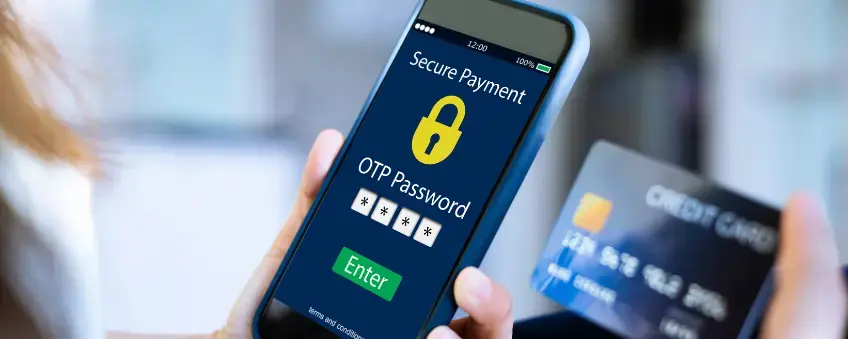What Is a Virtual Terminal?
In the context of payment processing, a virtual terminal is a web-based application that allows merchants to process credit card transactions online without any specialized computer hardware like a card reader. It's often used for card-not-present transactions, where a merchant doesn't physically swipe or insert a card but enters a customer's credit card information manually.
For merchants, a virtual terminal is a way to charge a customer's credit or debit card when a customer is not physically present at the point of sale, with only an internet connection and web browser. Virtual terminals are commonly used for transactions such as mail and telephone orders (MOTO), general online retail and eCommerce, mobile pop-ops shops, and all sorts of businesses needing a convenient and flexible way to accept customer payments. Read on to learn more about virtual terminals and how to go about choosing one for your business.
How Do Virtual Terminals Work?
Merchants enter a customer's card information, including the card number, card expiration date, and card verification value (CVV), into their virtual terminal's interface. The virtual terminal then securely transmits the information to the payment processor, validating the transaction with the credit card issuer. When the transaction is approved, the funds are transferred from the customer's account to the merchant's. Virtual terminals also include features for record-keeping, reporting, viewing transaction history, and managing all payment processing activities.
It's important to ensure the proper and secure handling of customer credit card information. Using a trusted payment processor or merchant service provider can help enable the proper protocols to keep sensitive customer data secure.
Virtual Terminals vs Payment Gateways
Virtual terminals and payment gateways are often used in conjunction but serve two different purposes within the larger electronic payment processing system. A virtual terminal is an interface that enables certain kinds of transactions, such as card-not-present transactions, through a specific kind of browser window.
Enabling much of all eCommerce, a payment gateway, on the other hand, is integrated directly into the checkout process of your online store, working in the background to securely transmit a customer's payment information in an online transaction.
You'll find that both payment gateways and virtual terminals are offered through your payment or merchant service provider as part of a suite of payment processing solutions like merchant accounts, business banking, bookkeeping, and accounting software, as well as countless integrations to make them all work together seamlessly.
Who Uses Virtual Terminals?
A wide variety of online retailers and businesses use virtual terminals to process customer credit card payments. Such as online retailers, mail-order and telephone-order (MOTO) businesses, service-oriented businesses (like consultants, freelancers, and creatives), as well as professionals (such as doctors, lawyers, and healthcare providers) often use virtual terminals to accept customer payments over the phone or by mail. As do businesses that operate on the go, like food trucks, pop-up shops, event managers, and other mobile businesses without a fixed point-of-sale terminal. Subscription-based businesses can work in much the same, such as streaming platforms and software-as-a-service (SaaS) companies.
In sum, all sorts of small to medium-sized businesses, including those deemed high-risk by certain financial institutions, use virtual terminals as a cost-effective and convenient way to accept payments when customers aren't physically present. This offers more flexibility and convenience to both customers and merchants in a wider variety of circumstances and sales opportunities.
Business types that benefit from virtual terminals
Many different types of businesses use virtual terminals in their payment processing, such as:
-
Online retailers and eCommerce businesses that process orders placed on their websites are key for businesses that sell products or services online.
-
Service-based businesses such as consulting, freelancing, or remote work can use virtual terminals to accept payments from outside clients.
-
Mail order/telephone order (MOTO) businesses accepting orders via phone or mail where customers provide credit card information verbally or in writing.
-
Event organizers handling ticket sales, conference registrations, or event fees can use virtual terminals to process payments made over the phone or through mail.
-
Nonprofits and charities that accept online donations and collect contributions from supporters.
-
Mobile businesses that operate on the go, such as food trucks, vendors at events, or mobile service providers, can use virtual terminals to process payments without a fixed physical terminal.
-
Subscription-based services, such as membership companies, streaming services, SaaS platforms, etc., use recurring billing payments.
- Small businesses or entrepreneurs operating on the road or from home may find virtual terminals convenient for processing payments without dedicated point-of-sale hardware.
- Home-based businesses and professional services that get paid by recurring payment, paper checks, money orders, or that take credit card payment over the phone.
-
Government agencies and public services that collect fees, fines, or payments for permits online
-
Brick-and-mortar retailers that take orders by phone, etc.
Key Features of Virtual Terminals
When you go to look for a virtual terminal from a merchant service provider, you'll want to understand its features so you can assess them for your own needs. Here's a breakdown of the various components:
Tokenization
Tokenization is a security feature that replaces sensitive card information with a unique identifier (token). This helps protect customer data by reducing the risk of unauthorized access during storage or transmission. Tokenization also offers enhanced security, reducing the exposure of sensitive cardholder data and supporting compliance with security standards like PCI DSS.
Recurring Payments
Virtual terminals often support recurring billing functionality, enabling businesses to set up automatic, scheduled payments for subscription services or installment plans. Automating regular payments can improve the customer experience and offer you, the merchant, a more predictable revenue stream.
Level II and III Processing
Level II and III processing is a feature of a virtual terminal that involves providing additional transaction data beyond the basics (Level I). This includes such items as tax accounting, customer codes, and more detailed order information. Having more detailed transaction data can benefit you in several ways, one being that you might qualify for lower interchange rates with your payment processor. In sum, Level II and III processing offers desirable and comprehensive transaction reporting and analytics.
Fraud Management Tools
Virtual terminals often have tools and features that help businesses identify and prevent fraudulent transactions. Such as risk scoring, which analyzes transactions based on predefined risk factors, and address verification services (AVS) that verify a customer's billing address. Finally, fraud detection involves monitoring the frequency (called velocity) of transactions to identify suspicious patterns. All of these features help to minimize fraud risk and instill confidence in your customers that your business will handle their transactions securely.
Advantages of Virtual Credit Card Terminals
There are many benefits to using a virtual credit card terminal. Most notably, it greatly expands the types of transactions you can accept in various business scenarios. Like selling products or services online from your own website.
Instead of running a customer's card solely through a register or card reader, a virtual credit card terminal makes it possible to process transactions through a simple web browser and handle orders over the phone, through the mail, or from the convenience of a 3rd party mobile app. The possibilities are nearly endless when you use a browser and Wifi connection to accept credit and debit card payments remotely. Compared to the limitations of a physical piece of hardware, this is a great expansion of your options.
Choosing the Right Virtual Terminal for Your Needs
Choosing the right virtual terminal for your business, industry, and business model is important but doesn't have to be complicated. Namely, you want a terminal that integrates well into your current financial system or sets you up well with a comprehensive system. You'll want to ensure your virtual terminal has the following basic features and is compatible with your business in its offerings:
- Manual entry: Can you manually enter credit card details through a web-based interface? Do you like the interface and find it easy to use?
- Invoicing capabilities: Can you create and send invoices with automatic payment options to customers?
- Recurring payments: Does the platform support recurring billing for subscription-based services?
- Real-time reporting: Can you access real-time transaction reports and manage your payment history?
- Security measures: What industry-standard security measures are featured to protect sensitive customer data, like encryption and compliance?
- Compatibility and integrations: What compatibility does it have with your various devices and browsers?
In other words, pay attention to a virtual terminal's (or well-integrated payment gateway's) basic features to ensure it's well-suited for your industry, company, and business model. You may even want to consider a merchant service provider who can recommend a particular payment system for your business. They have the expertise and industry connections to pair you with the right payment solution based on your business type!
Frequently Asked Questions (FAQs)
Many virtual terminal providers are available in today's market. Some better-known examples include NMI, Cybersource, Fluid Pay, Authorize.net, and many others.
However, as part of an integrated payment processing system, a virtual terminal is but one component. Therefore, a business needs to integrate a merchant account into its payment gateway to process a transaction.
While a virtual terminal provides a specific set of functionalities for manually entering card information, the methods below offer plenty of alternatives for accepting payment depending on your business needs.
- Point-of-sale (POS) systems work best for physical stores with card readers that accept card payments in person.
- Mobile card readers help serve businesses such as food trucks or other transient service providers that prefer to utilize mobile card readers that can connect to smartphones or tablets to process payments.
- eCommerce platforms that are integrated with a payment gateway allow for secure payments through your website.
- Invoicing software aids invoicing businesses with the convenience of invoicing software with built-in payment processing features so clients can make secure payments directly through your invoice.
- Payment gateway integration connects a payment gateway directly to your website or mobile app with secure payment transmission for every online transaction.
- Third-party payment apps like PayPal, Square, or Stripe offer a range of solutions for accepting in-person and online payments.
A credit card terminal and a virtual terminal are both tools used in payment processing, but they serve different purposes. A credit card terminal is a physical device used at point-of-sale locations, requiring the physical presence of a credit or debit card for transactions. It communicates directly with the payment processor and is ideal for in-person purchases.
In contrast, a virtual terminal is a web-based interface accessed through a computer or mobile device, designed for card-not-present transactions where the card is manually entered by the merchant. Virtual terminals are suitable for businesses that operate online, handle phone or mail orders, and need to process payments remotely.
Yes, Stripe offers a virtual terminal feature. However, Stripe is primarily known as a payment gateway. The virtual terminal functionality provided by Stripe allows merchants to manually enter credit card information for transactions, making it suitable for card-not-present scenarios such as phone orders or mail orders.






